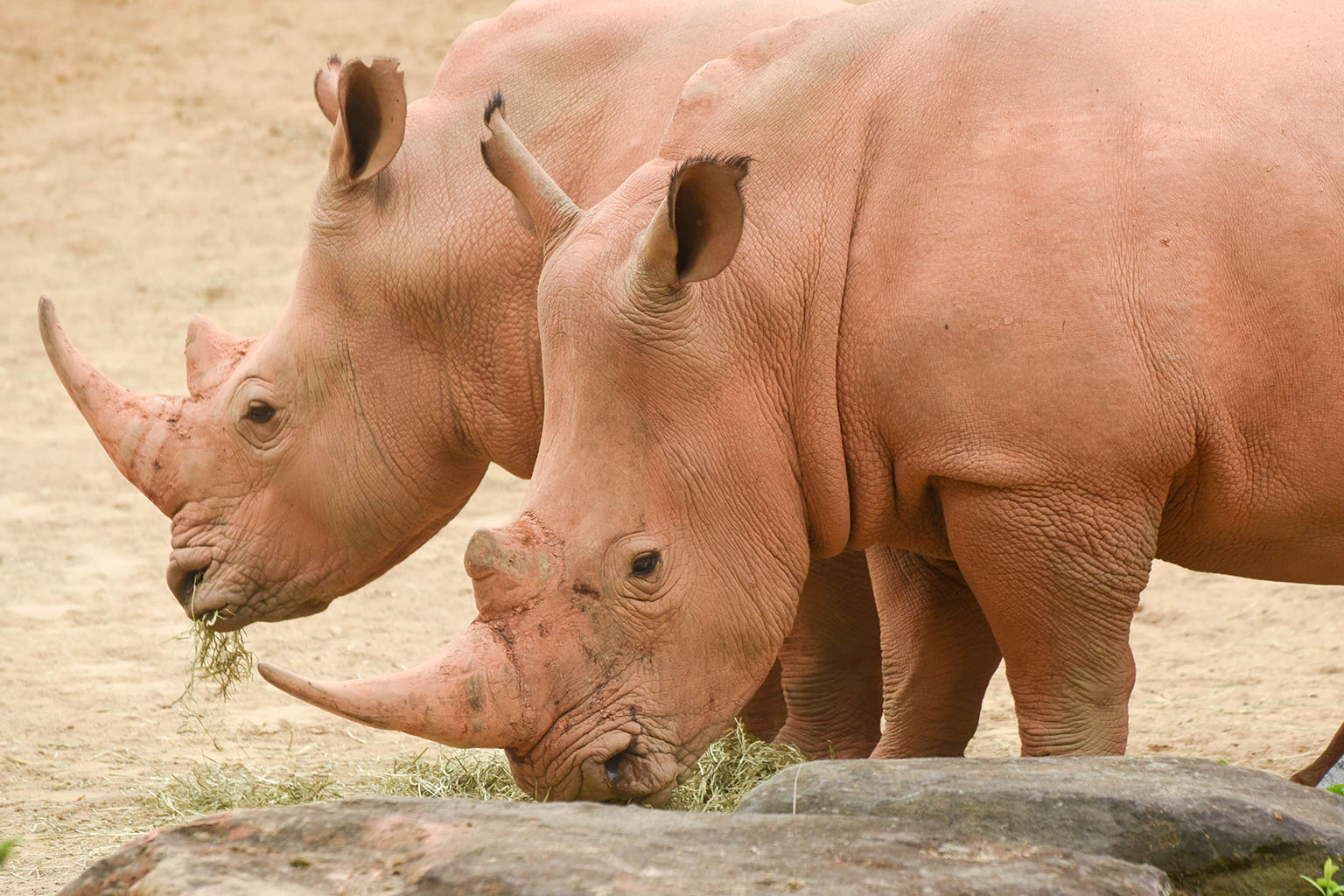

simum with the Langebaanweg rhinos being Ceratotherium sp. It is suggested that the real lineage of the white rhino should be Ceratotherium neumayri → Ceratotherium mauritanicum → C. Teeth of fossils assigned to Ceratotherium found at Makapansgat in South Africa were analysed for carbon isotopes and the researchers concluded that these animals consumed more than 30% browse in their diet, suggesting that these are not the fossils of the extant Ceratotherium simum which only eats grass. However, if Ceratotherium praecox is in fact Diceros praecox, then the shorter skull could indicate a browsing species. It has been suggested that the modern white rhino has a longer skull than Ceratotherium praecox to facilitate consumption of shorter grasses which resulted from the long-term trend to drier conditions in Africa. A review of fossil rhinos in Africa by Denis Geraads has however suggested that the species from Langebaanweg is of the genus Ceratotherium, but not Ceratotherium praecox as the type specimen of Ceratotherium praecox should, in fact, be Diceros praecox, as it shows closer affinities with the black rhinoceros Diceros bicornis. Remains of this white rhino have been found at Langebaanweg near Cape Town. The white rhinoceros of today was said to be likely descended from Ceratotherium praecox which lived around 7 million years ago. Taxonomy and evolution Southern white rhinos near Waterberg National Park, Namibia Simum, is derived from the Greek term simos (σιμός), meaning "flat nosed". The white rhinoceros' generic name, Ceratotherium, given by the zoologist John Edward Gray in 1868, is derived from the Greek terms keras (κέρας) "horn" and thērion (θηρίον) "beast". Īn alternative name for the white rhinoceros, more accurate but rarely used, is the square-lipped rhinoceros. A review of Dutch and Afrikaans literature about the rhinoceros has failed to produce any evidence that the word wijd was ever used to describe the rhino outside of oral use. This suggests the origin of the word was before codification by Dutch writers. Ironically, Dutch (and Afrikaans) later used a calque of the English word, and now also call it a white rhino. So early English-speaking settlers in South Africa misinterpreted the "wijd" for "white" and the rhino with the wide mouth ended up being called the white rhino and the other one, with the narrow pointed mouth, was called the black rhinoceros. The word "wide" refers to the width of the rhinoceros' mouth. The English word "white" is said to have been derived by mistranslation of the Dutch word "wijd", which means "wide" in English. Naming White rhinos in Murchison Falls National Park, Uganda Rhinos grazing in Solio Reserve, KenyaĪ popular albeit widely discredited theory of the origins of the name "white rhinoceros" is a mistranslation from Dutch to English. Sudan, the world's last known male Northern white rhinoceros, died in Kenya on 19 March 2018 at age 45. The northern subspecies has very few remaining individuals, with only two confirmed left in 2018 (two females: Fatu, 18 and Najin, 29), both in captivity. The white rhinoceros consists of two subspecies: the southern white rhinoceros, with an estimated 15,942 wild-living animals in the year 2018, and the much rarer northern white rhinoceros. It has a wide mouth used for grazing and is the most social of all rhino species. The white rhinoceros, white rhino or square-lipped rhinoceros ( Ceratotherium simum) is the largest extant species of rhinoceros.


Presence uncertain & assisted colonisation


 0 kommentar(er)
0 kommentar(er)
